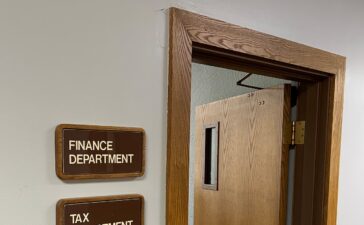With less than a month to go before the 2024 election, some Alaskans are already looking ahead to 2026.
On Thursday, Lt. Gov. Nancy Dahlstrom approved a ballot measure that would reimpose financial limits on political candidates and donors. The measure now faces a statewide vote in 2026.
Bruce Botelho, a former Alaska attorney general who is one of three leading sponsors of the ballot measure, said he hopes for faster action. If the Alaska Legislature passes “substantially similar” legislation to the ballot measure, it will be removed from the 2026 vote.
“I think we will make an effort to have the Legislature enact substantially the same language as the initiative, so that it will not have to be on the ballot in 2026,” he said.
It isn’t clear whether that will happen. Gov. Mike Dunleavy has previously said he prefers to have no limits, and lawmakers have declined to advance a substantially similar bill authored by Rep. Calvin Schrage, I-Anchorage and one of the cosponsors of the ballot measure.
“My hope is that the ballot measure being approved shows some of that strong support for campaign finance reform that I’ve been talking about for some time, and hopefully that will provide some more impetus for us to take action in the Legislature,” Schrage said.
According to a letter sent from Dahlstrom to the ballot measure’s sponsors on Thursday, the measure received 29,823 signatures from registered Alaska voters, more than the 26,705 needed to qualify. The measure also met a minimum threshold in at least 30 of 40 state House districts, something also required by law.
If the sponsors had waited until after this year’s election to gather signatures, the number needed to qualify would likely be higher. That’s because the minimum number of signatures is based on the turnout in the most recent general election, and the turnout in presidential elections generally is higher than in off-year elections.
If voters approve the measure in 2026, an individual person could donate up to $2,000 to a candidate in each election cycle, or up to $5,000 to a political party. For a joint governor-lieutenant governor ticket, they could give up to $4,000.
Political parties could give $4,000 to candidates and $5,000 to other parties or political groups. Those limits would rise with inflation every 10 years, beginning in 2031.
Those limits are based on legislation written by Schrage.
Alaska has been without campaign finance limits since 2021, when the 9th U.S. Circuit Court of Appeals struck down the state’s prior limits as unconstitutional. The state of Alaska declined to appeal the decision, and both the 2022 and 2024 elections have taken place without limits on the amount of money that an individual can give a candidate.
The 9th Circuit’s decision suggested that different, updated finance limits could be constitutional.
Alaska’s prior limits were imposed by a 2006 ballot measure that became law with the support of 73% of participating voters.
Supporters of the new measure say they expect similar support for their proposal.
“Our experience has been that people, regardless of where they align on the political spectrum, are troubled by the influence of unlimited money in campaigns for candidates,” Botelho said.
GET THE MORNING HEADLINES.
















